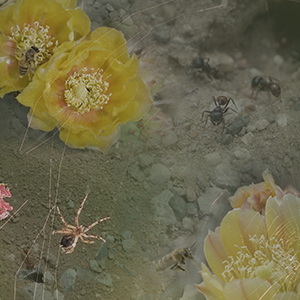Bug bites and stings are common concerns, especially during the warmer months when outdoor activities are prevalent. While many may think primarily of mosquito bites, other insects and arachnids can pose more serious health risks due to their ability to sting or inject venom. David Gummin, MD, Medical Director of the New Mexico Poison & Drug Information Center and a Professor of Emergency Medicine at The University of New Mexico School of Medicine, shares valuable information about the risks and responses associated with bug bites and stings.

“We think a lot about bug bites, but a lot of those bugs that are out there that really are the more concerning ones don't just bite, they often sting.”
“We think a lot about bug bites, but a lot of those bugs that are out there that really are the more concerning ones don't just bite, they often sting,” Gummin emphasizes. This distinction is critical because stings often involve the injection of venom, which can lead to more severe reactions compared to non-venomous bites.
Types of Insects and Their Reactions
Different insects and arachnids have various methods of causing harm.
“Spiders have venom when they bite, and scorpions sting, though fire ants can either bite or sting. When they sting, it means that they inject a type of venom into the person they're stinging,” Gummin explains.
The presence of venom can trigger more intense reactions, including pain, swelling, and in some cases, systemic symptoms.
Allergic reactions to bites and stings can be particularly dangerous. “If you have an allergic reaction to an insect or to a spider… it can be life-threatening, so if you know you have that allergy you need to be prepared for it,” Gummin advises. Carrying an epinephrine auto-injector if you have known severe allergies can be a lifesaver.
Signs of Infection and When to Seek Help
“The other maybe biggest complication that can result from bites or stings is an infection,” notes Gummin. “That usually happens more than 24 hours after a bite or sting occurs. It's important to monitor the site of the bite or sting for signs of infection, which can develop after the initial reaction subsides.”
Key signs to watch for include increasing redness, swelling, and warmth around the site, as well as red streaks spreading from the area or fever.
“If it starts to get very red and inflamed, if it starts to look like there's a red area tracking up your extremity away from the area that was bitten, or if it tends to splay out across your skin, or you get a fever – those are signs that you could be getting a bad reaction or an infection,” Gummin says.
Prevalence and Management
Fortunately, serious infections from insect stings or bites are rare.
“It happens very rarely in the vast majority of insect stings or bites people never bother to go into the hospital or be checked because all the symptoms resolve within about 6 to 12 hours,” Gummin states. Most people experience mild symptoms that resolve on their own, but it's still crucial to be aware of when to seek medical attention.
For those unsure about how to handle a bite or sting, resources are available. “Our poison center in New Mexico is very good at walking people through what they should be looking for after they've been envenomated or otherwise bitten. So, if you're having a tough time figuring out what to do, that's a free call. Just dial 1-800-222-1222 and check with the specialists at the New Mexico Poison Center,” recommends Gummin.
Preventive Measures
Preventing bug bites and stings is always preferable to dealing with their aftermath. Here are some tips to reduce your risk:
- Use insect repellent: Products containing DEET, picaridin, or oil of lemon eucalyptus can be effective.
- Wear protective clothing: Long sleeves, pants, and socks can help protect your skin from bites and stings.
- Avoid known habitats: Be cautious in areas where insects such as bees, wasps, and spiders are commonly found.
- Keep outdoor areas clean: Reducing standing water and keeping food covered can minimize attractions for insects.
Understanding the differences between bites and stings, recognizing symptoms of severe reactions, and knowing when to seek help are essential steps in managing these common but potentially serious incidents. With expert advice and preventive measures, you can enjoy outdoor activities with greater peace of mind.
